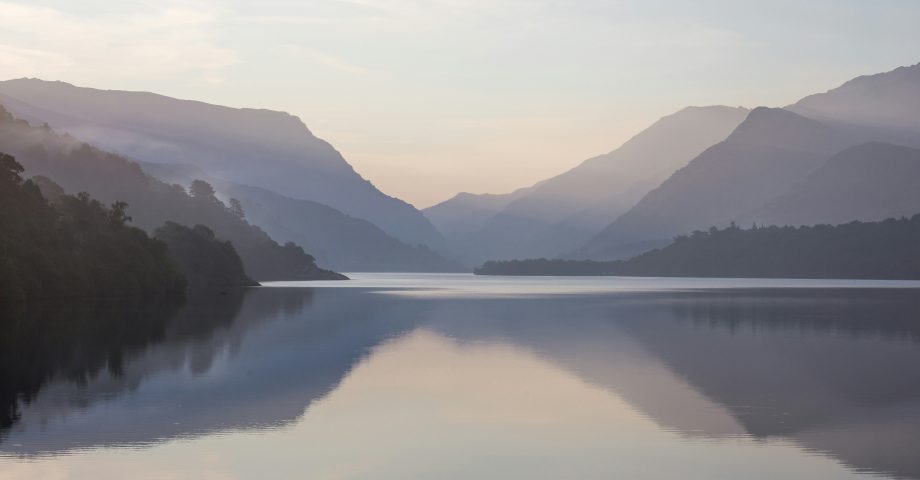If you’ve ever fancied taking a holiday in Wales before, there’s a good chance you might have considered visiting Snowdonia National Park, home to some of the most beautiful and invigorating walks across the whole of the country!
Also known as Eryri, this majestic corner of the UK is home to the staggering Mount Snowdon and a variety of other peaks and valleys that welcome thousands of visitors every single year. In fact, Snowdonia remains one of the most popular tourist resorts in Wales, full stop.
But how much do you actually know about Eryri? What is it about this plot of land that appeals to so many people? In this fact file, we’ll take a look at some of the most fascinating facts about Snowdonia – handy if you’re writing a report about the region, or if you’re planning a trip out here and want some inspiration!
Here are some brilliant facts about Snowdonia I’ve brought together to inspire you, regardless. If you have any facts of your own, be sure to let us know in the comments at the bottom of the post!
1. There are no bigger National Parks in Wales.
Snowdonia is certainly the biggest National Park of its kind in Wales. It’s actually the third biggest in the UK, too, stretching across a breathtaking 800 square miles. It’s packed with wildlife, greenery, hilly views, and quite a bit of Welsh history, too.
2. It’s been a part of the National Park scene since the 1950s.
What might surprise you is that Snowdonia has only been a National Park, officially, since 1951. It was during the October of that year that the area was officially designated. It was also the third park of its kind to be established in the UK, full stop – the Peak District and the Lake District, reportedly, got there first.
It’s overseen by Snowdonia’s own national park authority, an assembly of 18 appointed members who make decisions regarding the park and often act in the interest of Welsh citizens.
3. It has an impressive nine mountain ranges.
If you’re familiar with Snowdonia at all, it’s likely that the staggering Mount Snowdon probably comes to mind first of all. However, it’s not the only peak you’ll spot in the park. There are nine in total, and they are the Aran Fawddwy, the Snowdon Massif, the Cadair Idris, the Glyderau, the Rhinogydd, the Carneddau, the Dyfi Hills, the Moel Hebog, and the Moelwynion.
Five of these (Snowdon Massif, Moel Hebog, Glyderau, Moelwynion, and Carneddau) are regarded as the ‘main’ ranges, but holidaymakers might want to explore all nine (if they’re true completionists)!
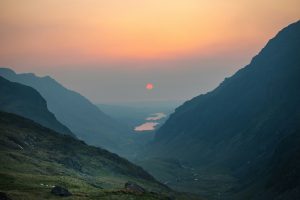
4. You’ll find Snowdonia to the north of Wales.
If you’ve never been to Wales before, you might be surprised by just how large and varied the land is out here! Snowdonia is actually in the north west, technically in the county of Gwynedd. It’s under the jurisdiction of the Conwy borough.
5. Mount Snowdon is the main highlight for lots of visitors.
Although there are tons of walks, peaks, and valleys out here in Snowdonia, it’s Mount Snowdon itself that tends to get the most attention. Why? Just look at the size of it!
Technically, Mount Snowdon is around 1,085 metres, or 0.67 miles, tall. It’s easily the largest of all the mountains in the park. And, did you know that there are six different walking or climbing routes up the mountain, each with different difficulty levels? If you’re a seasoned climber, it might be worth looking for the more challenging routes!
6. There’s meaning behind the name.
As mentioned at the start of this article, Snowdonia has a different name in traditional Welsh – Eryri. In fact, many people (especially those local to the region) prefer to use this name instead. It’s thought to derive from another Welsh term, eryr, which means eagle!
Here’s where things get even more interesting. This name has an important meaning because golden eagles are said to have visited the region over decades past. However, there’s also a lobby that suggests the name means something equivalent to ‘upland’ – the jury is out, but the name’s still majestic all the same.
7. It’s an important location in Welsh legend and folklore.
Perhaps unsurprisingly, the majestic Snowdonia plays a very important part in certain Welsh legends. Specifically, you’ll see it mentioned in stories deriving from the Mabinogion collection, a series of heroic tales and feats. Many of the real-life locations across the park are referred to in these stories, making it all the more fascinating for historians and storytellers to visit!
8. Almost 100 mountains here are over 200 feet tall.
If you want to crack walking Snowdonia’s ‘top 100’, you’ll need to be able to traverse around 200 feet every time. That’s because 93 of the peaks in the region are taller than this – and 15 of them are taller than 3,000 feet, too!
It’s certainly a paradise for mountain climbers and people who just love hilly walks – but remember to take care at altitude if you’re new to this scale of rambling or are prone to sickness at certain heights. Always pack the right equipment, wear appropriate clothing, and take breaks!
9. It’s a superb spot for lake walking, too.
Although Snowdonia is naturally famous for its peaks and valleys, it’s just as spectacular for its amazing lakes, too. In fact, there are more than 100 lakes for you to explore out here – you’re going to need to book a pretty long holiday, that’s for certain!
Naturally, you’ll want to take a look at one lake in particular – the gargantuan Llyn Tegid, or Bala Lake, a monster of a water spot that’s at least 3.5 miles long! It’s actually the longest lake in Wales, too – so make a point of wandering around this record breaker if you can!
And, there’s more than just lakes to watch ripple, too. The park is reportedly home to more than 430 miles of river!
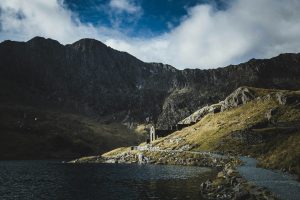
10. There are some rare creatures in Snowdonia.
As such an amazing natural beauty spot, it’s perhaps unsurprising for you to learn that there are lots of different diverse animals that live out here, too. In fact, if you’re keen to spot some truly rare creatures, keep your eyes peeled for the sand lizard – perhaps the country’s rarest reptile.
And that’s not all. Plant lovers might be surprised to find the truly elusive Snowdonia hawkweed, a species you’ll find nowhere else in the world but Snowdonia. Fascinatingly, it was thought to have died out after overgrowing – but three specimens were rescued in the early 00s, and the plant has thankfully made a comeback.
11. Most people in Snowdonia speak Welsh.
Snowdonia is said to be home to more than 26,000 people at last count, and what’s most interesting about these denizens is that around 58% of them are thought to be fluent Welsh speakers!
This is all the more interesting because very few people, globally, actually speak the language at all. The last measurement found that fewer than 892,000 people speak Welsh worldwide – and that the number is decreasing by just under 1% a year.
12. There are plenty more reasons to go exploring Bala Lake.
No, we’re not done with the majestic Bala Lake just yet – as it happens, it’s not just a fascinating lakeside walk. It’s also over 40 metres deep, meaning it’s home to some fantastic wildlife the likes of which many of us have never seen before.
For example, the area is of particular interest to scientists thanks to its population of unique gwyniad fish – meaning the area is somewhat protected, though some people do go fishing here.
It’s also a popular sport for various watersports, such as kayaking and paddle-boarding. Get out on the lake however you wish!
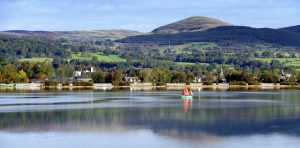
13. Taking on Wales’ main peaks would be a heck of a feat.
The 15 largest peaks I mentioned earlier – which measure more than 3,000 feet in height – make up something of a challenge for mountaineers. They come together to make the famous Welsh 3000s or 15 Peaks challenge, where people aim to climb all 15 of the biggest mountains in Snowdonia in one trip.
This is a pretty massive undertaking – it would mean traversing over 30 miles in total, at an almost 2.5 miles ascent – meaning you’ve got to be super fit to even consider taking the challenge on!
14. Much of the park is woodland, too.
Again, the mountains and the lakes here take a lot of the interest and the credit – but it’s thought as much as 17% of Snowdonia ‘s ground area is made up of woodland. That, coupled with the fact that the Welsh countryside is nice and moist, means it’s home to all kinds of woodland flora and fauna that nature lovers will want to try and spot.
For example, you might spot the Snowdon lily, an extremely rare plant you won’t find anywhere else on the planet. Therefore, don’t be tempted to pick it!
15. There are trails here for a reason.
There are hundreds of designated walking paths around Snowdonia for obvious reasons – but did you know that there are leftover trails here dating back to a very specific time in the park’s history?
In fact, the ancient trails here date back to a time long before Snowdonia was ever designated a park. It’s thought that drovers and dogs used to herd livestock across the valleys – across journeys that would take weeks at a time to finish.
Believe it or not, many drovers were armed in case of highway robberies! Interestingly, you can still trail many of the ancient lines by foot or bike if you wish.
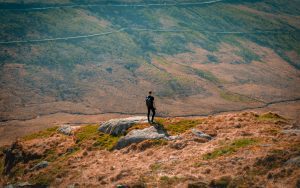
16. If you like ziplining, you’re in for a treat.
Yes, although Snowdonia is largely preserved for lovers of nature walks and stunning landscapes, there are a couple of fun touches out here for adventure lovers of all ages. For example, you might want to check out Zip World – which is supposedly home to what’s said to be the fastest zipline on the planet.
You could be zipping across the park at up to 100 miles per hour – at height! That said, you can also zipline underground, too – whichever takes your fancy!
17. It’s thought some of the world’s best mountaineers trained in Snowdonia.
And, can you really blame them? It’s thought that Sir Edmund Hillary and Tenzing Norgay, who would go on to conquer Mount Everest, visited Snowdonia first. In fact, many mountaineers who (naturally) look up to the duo’s legend regard visiting the park as something of an important pilgrimage!
18. It’s been recognised by UNESCO at least twice.
At the time of writing, Snowdonia has been recognised for not one but two UNESCO heritage sites, with the Slate Landscape of North West Wales being the latest addition back in 2021.
Before that, UNESCO declared that Harlech Castle, in Snowdonia, formed part of what’s become known as the Castles of Gwynedd. This is a broader heritage site that’s existed on UNESCO’s list since 1984.
It’ll be interesting to see if any more of Snowdonia’s spectacular landscape is recognised by UNESCO in the years to come – we will update you if it is!
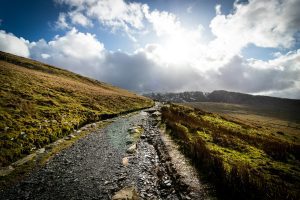
19. There are few places wetter than Snowdonia.
There is absolutely some truth behind the UK (and certainly Wales) being incredibly damp and drizzly – and in fact, there’s an area of Snowdonia that can be considered one of the rainiest spots in the whole of the British Isles.
Specifically, Crib Goch receives a staggering 44.73 cm in rain every single year. That means most visitors to the National Park make sure to arm themselves with waterproof clothes and wellies (unless they’re scaling the peaks, of course)!
20. There’s lots of railway history up here, too.
Railway fans usually have tons to explore when it comes to history across the UK – and Snowdonia is a spectacular treat for the most ardent of trainspotters.
Up here, there’s the Snowdon Mountain Railway, which takes you across the park with a summit stop along the way. A standard journey on the train will take around two and a half hours, with lots of chances to snap some incredible views along the way.
21. King Arthur is often associated with Snowdonia.
Millions of us in the West have heard about the legends of King Arthur and the Knights of the Round Table. However, did you know that Arthur has links to Snowdonia National Park, too?
Believe it or not, King Arthur is said to have slain a goliath beast on Mount Snowdon itself. The King is said to have cut down the Rhitta and then commanded men to bury him with stones. Whether you’re a fan of Arthurian legend or not, you can’t deny it’s interesting to think about.
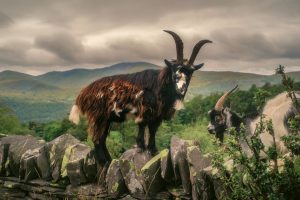
22. The majority of Snowdonia is private land.
One way in which British National Parks differ from those overseas is that they’re shared between private and public ownerships. Snowdonia is a great example of this – at the time of writing, the majority of the park belongs to private landowners (around 70%).
The National Trust, a British institution that exists to protect and preserve countryside and land, owns just less than 6% of the park. Oddly enough, around 1% belongs to water companies – that’ll likely be the lakeland and the drainage.
23. There are plenty of rivers draining from the park.
As mentioned, there are miles upon miles of rivers extending across Snowdonia. Many will drain into the nearby Cardigan Bay – and these include the Mawddach, the Dwyryd, the Dlaslyn, and the Dysynni.
24. People have been coming to Snowdonia for thousands of years.
Incredible feats of archaeology across Snowdonia suggest that people first settled here as early as 4,000 BC! That’s thanks to there being evidence of hut circles and various systems built into ancient fields.
Of course, the Roman Empire eventually took over the land, and there was even a fort built here before 100 AD. It’s also thought that Romans helped to develop roads that connected Snowdonia to modern areas like Chester and Caernarfon.
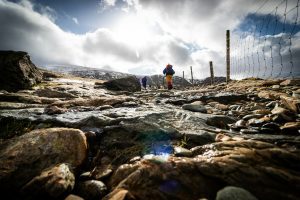
FAQs About Snowdonia
What’s so special about Snowdonia?
Snowdonia is home to Mount Snowdon, officially Wales’ highest peak – it’s higher than any peak in England, too. It’s also home to Wales’ biggest natural lake, and is considered a training ground for anyone looking to climb Mount Everest.
Is there a beach in Snowdonia?
Yes – in fact, there are 35 of them! Snowdonia National Park has an incredible coastline that measures at least 200 miles – making up part of what’s known as the Wales Coast Path, which was set up in 2012.
What’s the closest town to Snowdonia?
If you’d like to stay in a nearby town when visiting Snowdonia, you’ll need to make a beeline for Blaenau Ffestiniog. It’s actually the only town that’s completely surrounded by the park! It has its own railway station, so you can get there easily from elsewhere in Wales.
Do you know any fun facts about Snowdonia? Share them in the comments below!
Further reading
https://snowdonia.gov.wales/
https://www.visitsnowdonia.info/
